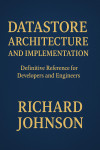Datastore Architecture and Implementation by Richard Johnson
Synopsis
"Datastore Architecture and Implementation"
"Datastore Architecture and Implementation" is an authoritative and meticulously structured reference that delves into the essential principles, design choices, and operational intricacies behind modern datastore systems. Catering to architects, engineers, and technical leaders, the book begins with a comprehensive exploration of datastore evolution—tracing the journey from flat-file storage to complex, distributed databases—and articulates core foundations such as transactions, scalability, availability, and consistency. By classifying the diverse ecosystem of datastores, including key-value, document, wide-column, and graph databases, readers are equipped to strategically map workloads to optimal storage backends and build effective data models attuned to application needs.
The text moves beyond foundational theory to deliver deep technical guidance on the internal mechanics of data storage—from disk layouts and indexing approaches to advanced compression, buffer management, and garbage collection. It provides expert insights into distributed architecture, detailing key constructs such as sharding, replication, consistency models, and consensus protocols like Raft and Paxos. Practical strategies for transaction management, concurrency control, query optimization, fault tolerance, and disaster recovery are covered with a thoroughness that highlights real-world trade-offs and best practices in both standalone and geo-replicated deployments.
Encompassing the increasingly dynamic landscape of data management, "Datastore Architecture and Implementation" addresses critical concerns around security, compliance, and system resilience, including encryption, auditing, and regulatory standards. The book looks ahead to future trends with in-depth discussions on cloud-native, serverless, and edge datastores, the rise of AI-powered management, and energy-efficient engineering for sustainable data storage. Blending rigorous conceptual exposition with actionable architectural patterns and emerging directions, this definitive guide is indispensable for designing and operating robust, high-performance datastore systems in today’s data-driven world.
Reviews
Write your review
Wanna review this e-book? Please Sign in to start your review.












